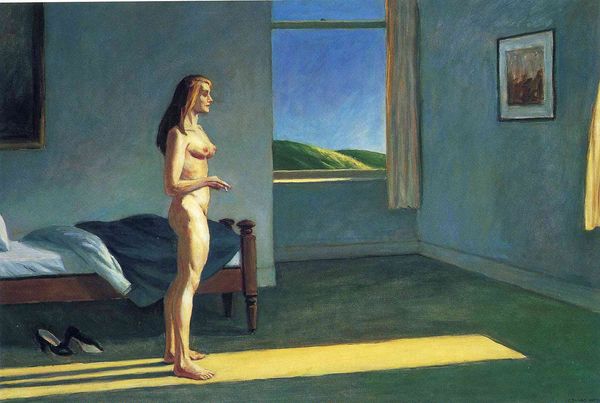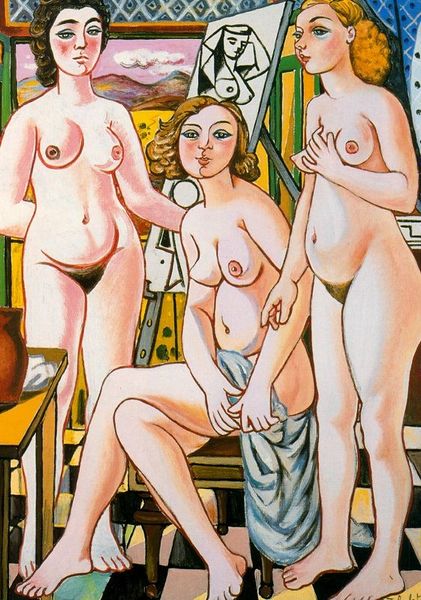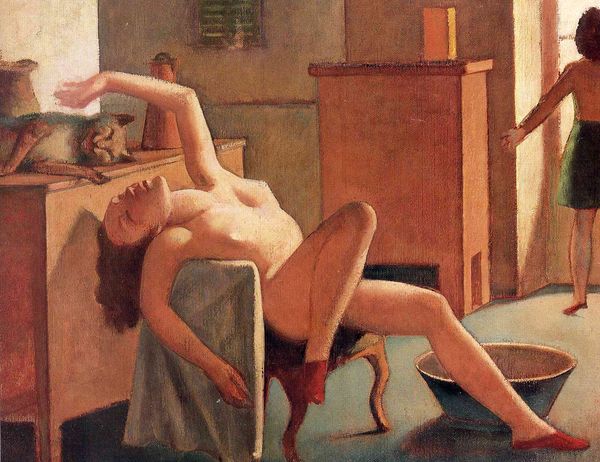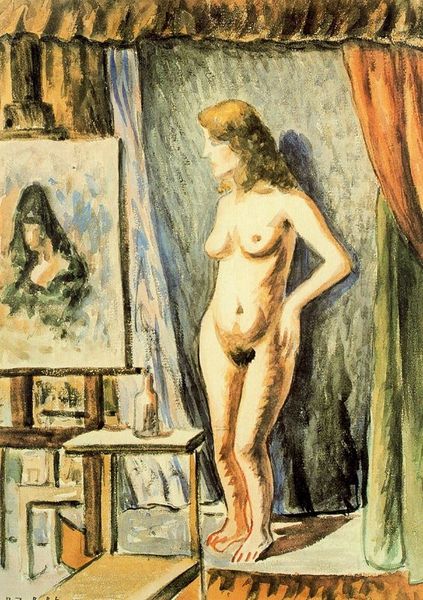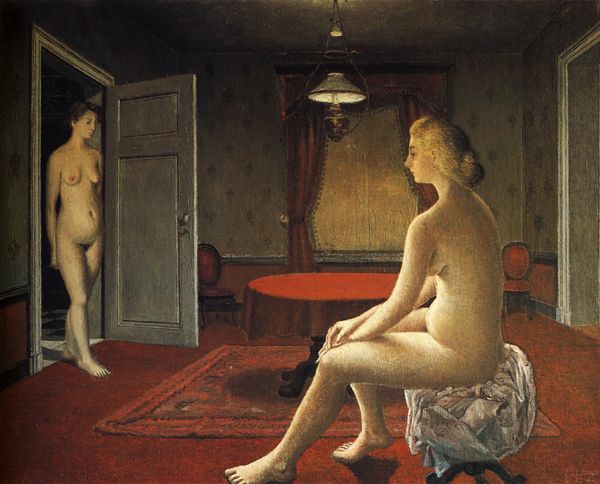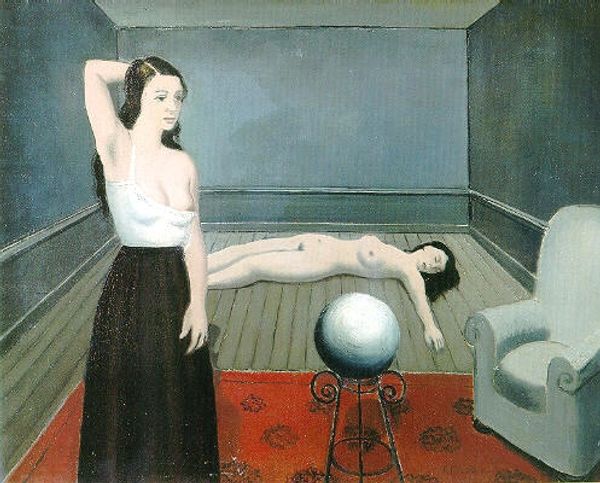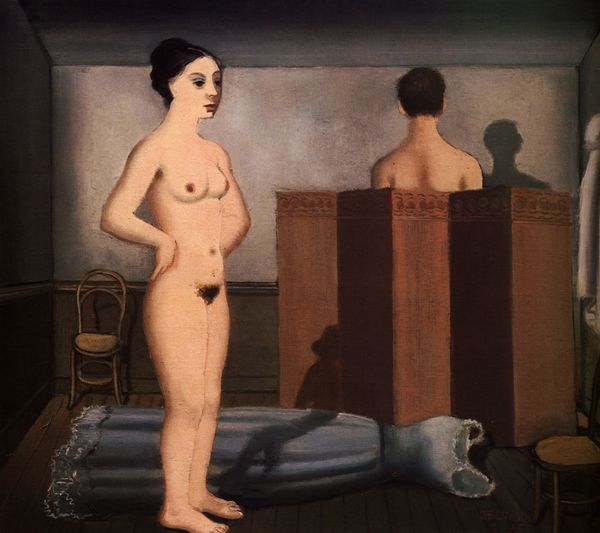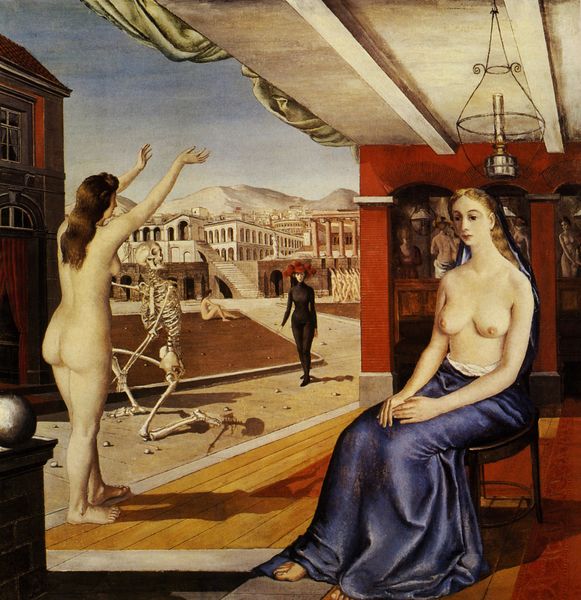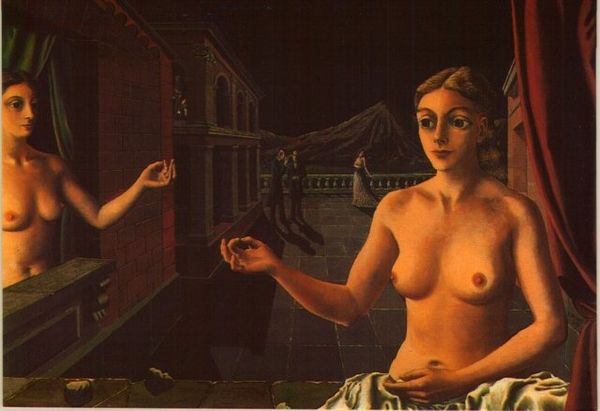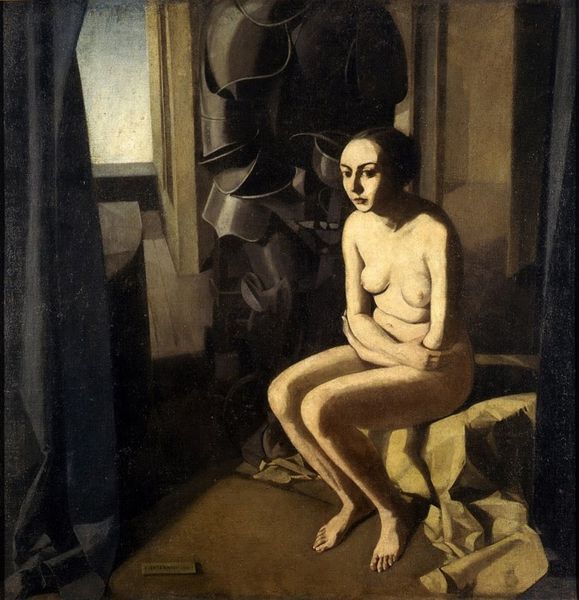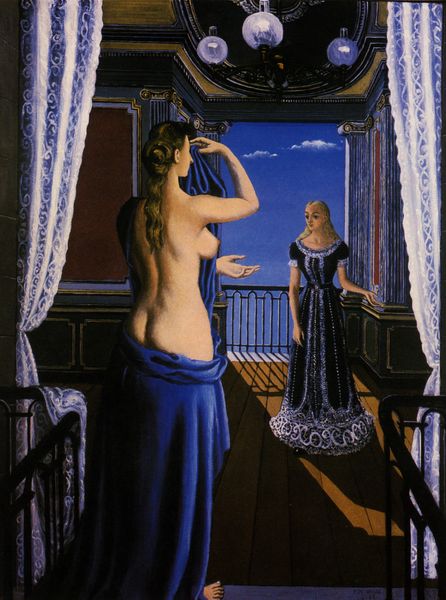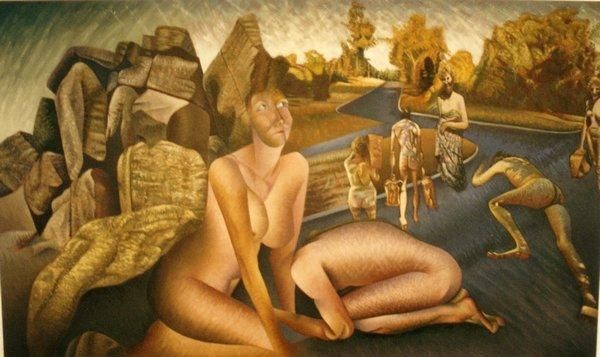
Copyright: Paul Delvaux,Fair Use
Curator: The oil painting we are examining today is entitled "Mirror," crafted by Paul Delvaux in 1939. At first sight, what elements grab your attention? Editor: Immediately, it’s the unsettling juxtaposition of the two women. One clothed and contemplative in a deteriorating room, the other nude and poised in an idyllic, almost classical landscape reflected in the mirror. The contrast in styles is very striking. Curator: I agree. Looking closer at the material choices, one notices how Delvaux builds the uncanny atmosphere through his meticulous representation of surfaces: the peeling wallpaper speaks to a space in decay, mirroring the instability of pre-war Europe, the mirror shows both an intimate self-regard and its role in capitalist culture and advertising, emphasizing commodity. The materials themselves and the manner in which Delvaux used oil-paint suggests both artistic virtuosity but the looming crises. Editor: And what a strange way to use oil paint: creating such an exacting image—look at how light and shadow interplay in the woman’s reflection. Delvaux draws on an almost Renaissance-like composition with its use of linear perspective in the mirror, but subverts this by positioning his central figure so oddly; neither fully integrated within her surroundings, nor truly isolated from them. Her presence raises semiotic tension in how to understand her connection between art historical and art modern contexts, it challenges the visual reading. Curator: Interesting analysis. And considering the wider circumstances, how the canvas becomes a site for understanding artistic labor during a tumultuous time – from acquisition of materials to Delvaux’s use of established skill-sets, its exhibition in galleries or a private collector. Consider it: A commodity reflecting on commodity culture with the material suggestion of class or artistic labor at its surface. Editor: The psychological resonance is powerful though; in its structural complexity lies an enduring quality that defies simple reading. Even the choice of the mirror is so laden! It serves not merely as a prop or device but becomes essential to understanding how Delvaux orchestrates dualities – illusion versus reality; introspection against presentation— all heightened via his mastery in composition that goes beyond a surface. Curator: Agreed; his manipulation and deployment of historical art’s materials become crucial signifiers within larger frameworks— questioning social reality. Thank you for that illuminating point, it shows that Delvaux's legacy stands at complex nodes with shifting values, always relevant within each epoch and new frameworks of thinking. Editor: An apt observation! The structure and inherent contrasts, as ever, yield novel interpretations across contexts that expand rather than narrow it over time.
Comments
No comments
Be the first to comment and join the conversation on the ultimate creative platform.

